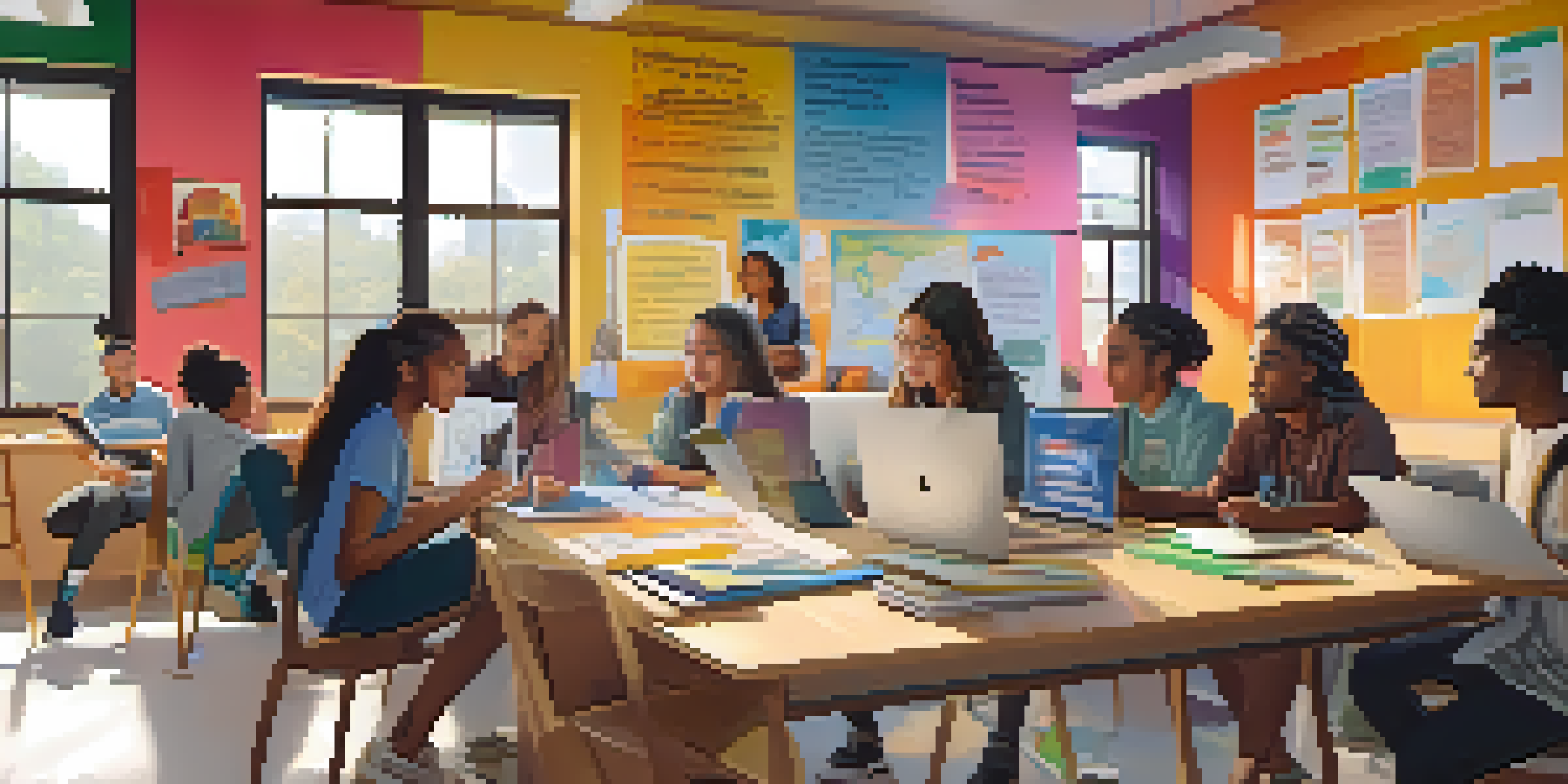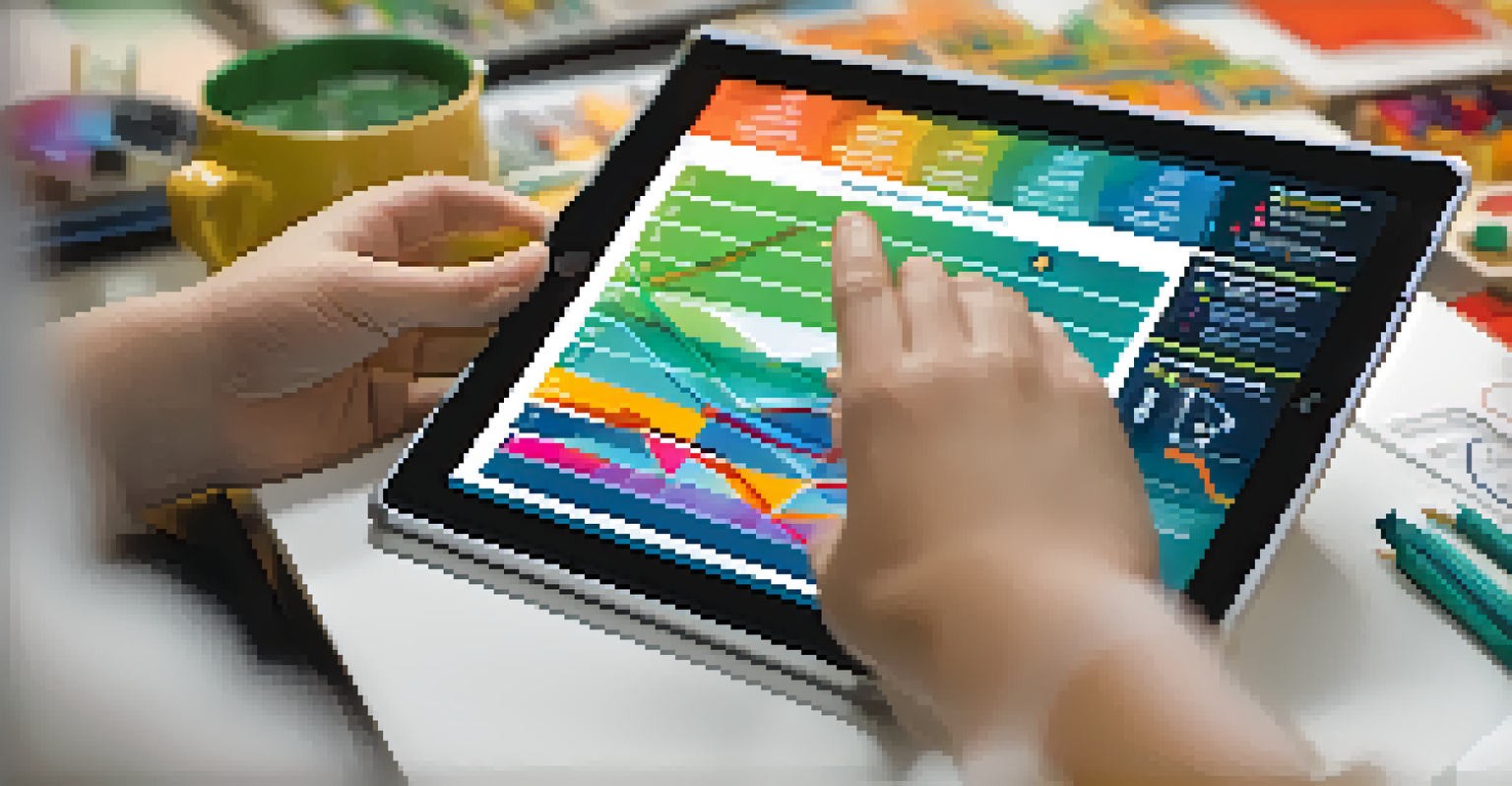Addressing Language Barriers in Digital Learning Environments

Understanding Language Barriers in Digital Learning
Language barriers can significantly hinder the learning process, especially in digital environments where interaction is primarily text-based. These barriers occur when learners do not fully understand the language in which the content is delivered, leading to confusion and disengagement. This challenge is particularly pronounced in diverse classrooms where students come from various linguistic backgrounds.
Language is the road map of a culture. It tells you where its people come from and where they are going.
Imagine trying to solve a complex math problem while your teacher explains it in a language you barely understand. Frustrating, right? This scenario highlights the importance of addressing language barriers to ensure all students can access and engage with learning materials. Without effective communication, students may struggle to grasp key concepts, putting them at a disadvantage.
Recognizing the impact of language barriers is the first step toward creating inclusive digital learning environments. By addressing these barriers, educators can foster a more equitable learning experience that promotes understanding and engagement for all students.
The Role of Technology in Bridging Language Gaps
Technology offers a variety of tools that can help bridge language gaps in digital learning environments. For instance, translation software and apps can assist students in translating course materials into their native language, making content more accessible. These tools can empower learners by providing them with the resources they need to understand complex topics.

Consider a student who is learning programming concepts in English but is more comfortable in Spanish. With the help of translation tools, they can access tutorials and documentation in their native language, allowing them to grasp the material more effectively. This not only boosts their confidence but also enhances their overall learning experience.
Overcoming Language Barriers
Addressing language barriers is essential to ensure all learners can engage with digital materials effectively.
Moreover, technology can facilitate real-time communication between educators and students through chat features and forums, where language support can be offered. By incorporating these technological solutions, educators can create a more inclusive and supportive learning environment that accommodates diverse linguistic needs.
Implementing Multilingual Resources in Course Design
Integrating multilingual resources into course design is crucial for addressing language barriers in digital learning. This can involve providing materials in multiple languages, such as translated texts, subtitles for videos, and audio resources in various dialects. By doing this, educators can cater to a wider audience and ensure that all learners feel included.
The limits of my language mean the limits of my world.
For instance, a course on global history could feature readings from both English and Spanish sources, allowing students to choose the language they are most comfortable with. This approach not only aids comprehension but also enriches the learning experience by exposing students to diverse perspectives.
Additionally, offering resources in multiple languages can help foster a sense of belonging among students. When learners see their native language represented in their educational materials, it validates their identity and encourages them to engage more actively with the content.
Creating an Inclusive Learning Community
Building an inclusive learning community is essential for addressing language barriers in digital environments. Educators should encourage collaboration and communication among students from different linguistic backgrounds. This can be achieved through group projects, discussions, and peer-to-peer learning opportunities that promote interaction.
Picture a virtual classroom where students share their language skills with one another, helping each other understand course content. This collaborative approach not only enhances language skills but also fosters a sense of community and belonging. When students feel connected, they are more likely to participate and engage in their learning.
Technology as a Bridge
Utilizing translation tools and real-time communication enhances accessibility and supports diverse linguistic needs.
Furthermore, educators can facilitate this inclusivity by promoting cultural awareness and sensitivity. By celebrating linguistic diversity, teachers can create a more welcoming atmosphere where all students feel valued and empowered to contribute.
Training Educators to Address Language Barriers
Equipping educators with the skills to address language barriers is vital for enhancing digital learning experiences. Professional development programs can provide teachers with strategies for supporting multilingual learners, such as differentiated instruction and culturally responsive teaching. This training is essential for fostering an inclusive environment.
Think of educators as navigators guiding students through the sometimes-turbulent seas of learning. By providing teachers with the right tools and knowledge, they can effectively steer their students toward success, regardless of linguistic challenges. This preparation helps educators recognize and respond to the unique needs of their students.
Additionally, ongoing support and resources for educators can encourage them to continually refine their practices. By fostering a culture of learning among teachers, educational institutions can enhance the overall quality of instruction and better serve diverse student populations.
Utilizing Visual and Multimedia Learning Aids
Visual and multimedia learning aids are powerful tools for overcoming language barriers in digital learning. By incorporating images, infographics, videos, and interactive content, educators can convey complex ideas in a more accessible manner. These aids can transcend language limitations, helping students grasp concepts without relying solely on text.
Imagine a science lesson featuring videos that demonstrate experiments visually. Even if students struggle with the language, they can still understand the process through observation. This approach not only enhances comprehension but also caters to various learning styles, making lessons more engaging for everyone.
Creating Inclusive Resources
Integrating multilingual materials and visual aids fosters an inclusive learning environment and validates students' identities.
Furthermore, visual aids can encourage students to participate in discussions and activities, even if they have limited language skills. When learners feel empowered to engage with the content, they are more likely to take ownership of their education and develop a deeper understanding of the subject matter.
Evaluating and Adapting Learning Materials for Inclusivity
Regularly evaluating and adapting learning materials is essential for ensuring inclusivity in digital learning environments. Educators should assess whether their resources effectively meet the needs of all students, particularly those facing language barriers. This ongoing evaluation process allows for necessary adjustments to be made to enhance accessibility.
For example, if a course includes reading materials that are too complex for non-native speakers, educators may consider simplifying the text or providing additional support resources. This proactive approach helps identify potential obstacles before they impede the learning process, ensuring that all students have the opportunity to succeed.

Additionally, gathering feedback from students about their experiences can provide valuable insights into the effectiveness of learning materials. By fostering open communication and actively seeking input, educators can continually refine their approaches and create a more inclusive learning environment.